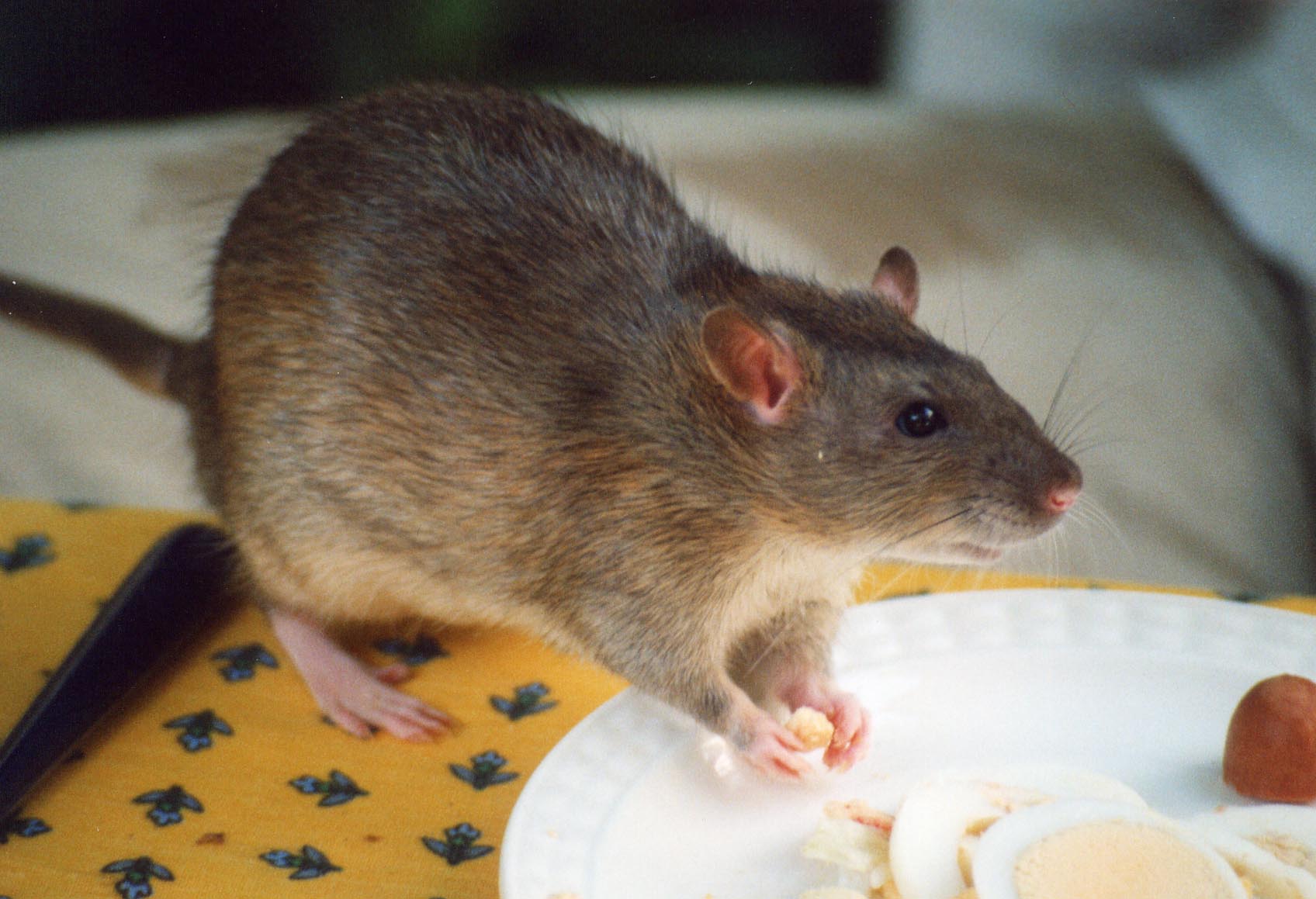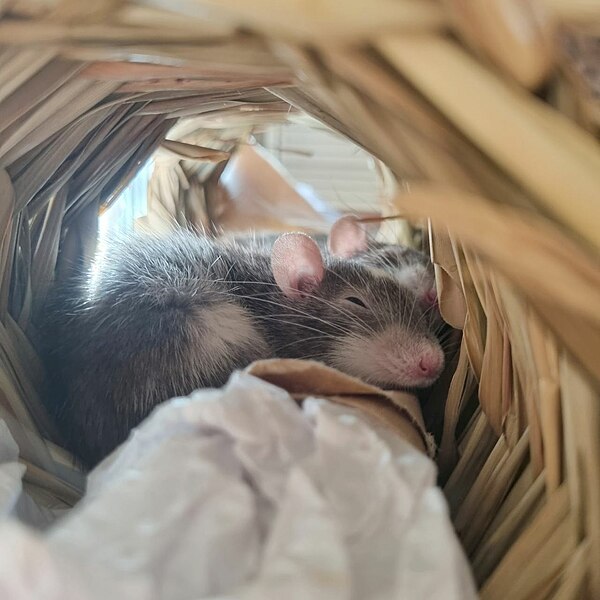Rats are larger and more aggressive, while mice are smaller and more curious.
Ever found yourself squinting at a tiny intruder, wondering if you’re dealing with Stuart Little or his bigger, badder cousin? Trust me, I’ve been there. It’s like trying to tell apart identical twins at a distance – only these twins are furry, have whiskers, and might be raiding your pantry.
Here’s the thing: knowing whether you’re facing off against a rat or a mouse isn’t just about winning rodent trivia night at your local pub. It’s crucial info that can help you protect your home, your health, and maybe even your sanity. These little critters might look similar at first glance, but they’re as different as a Chihuahua and a Great Dane (okay, maybe not that extreme, but you get the idea).
In this whisker-twitching adventure, we’re going to dive into the nitty-gritty of rats versus mice. We’ll explore everything from their size and looks to their sneaky behaviors and dining preferences. By the time we’re done, you’ll be a regular Sherlock Holmes of the rodent world, able to spot the difference between these furry felons faster than you can say “cheese!”
Key Takeaways
- Rats are significantly larger than mice, with adult rats reaching up to 40cm in length
- Mice are more curious and likely to explore new objects, while rats are more cautious
- Rats have thicker, scaly tails, whereas mice have thin, hairy tails
- Mice have larger ears relative to their body size compared to rats
- Both can be pests, but rats generally cause more damage due to their size and strength
Physical Differences
When it comes to distinguishing between rats and mice, size definitely matters. These rodents may seem similar at first glance, but a closer look reveals some significant differences.
Size Matters
Rats are the giants of the rodent world, at least when compared to their smaller cousins. On average, a rat’s body length ranges from 9 to 11 inches, and that’s not even including their tails! Mice, on the other hand, are much smaller, typically measuring about 3 to 4 inches in body length. So, if you spot a tiny, scurrying furball, it’s more likely a mouse than a rat.
Tail Tale
The tails of these critters are another giveaway. Rat tails are thick, scaly, and usually shorter relative to their body length. They’re strong and sturdy, perfect for balancing their larger bodies. In contrast, mouse tails are thin, long, and covered in a light fur. They have a more delicate appearance and are often nearly as long as their bodies.
Face and Ears
Take a closer look at their faces and ears, and you’ll notice more differences. Mice have a distinctly triangular face with large, prominent ears that make them look rather endearing (or at least less intimidating). Their eyes are relatively large for their size, giving them a more alert expression. Rats, however, have broader faces with smaller ears. Their eyes are smaller in proportion to their heads, which can give them a more serious or even menacing look.
These physical characteristics are your first line of defense in identifying whether you’re dealing with a rat or a mouse. But there’s more to these rodents than just looks. Next, let’s explore their behavior and habitats to get a full picture of what makes each of them unique.

Behavior and Habitat
Understanding the behavior and habitat preferences of rats and mice can give you more insight into these little invaders. Despite their similarities, they have distinct habits and living environments.
Home Sweet Home
Rats and mice have different preferences when it comes to setting up their homes. Rats prefer basements, sewers, and burrows. They enjoy the dark, damp areas where they can stay hidden and safe from predators. You’ll often find them in underground spaces, like burrows in the garden or the dark corners of basements and sewers.
Mice, however, are more adaptable and can be found in various environments. They’re likely to be discovered in attics, walls, and cupboards. Mice are excellent climbers, so they can make their homes in higher places within your house. Their small size allows them to squeeze into tiny cracks and crevices, making them harder to find and catch.
Behavioral Traits
When it comes to personality, mice and rats differ significantly. Mice are naturally curious and adventurous. They explore new environments eagerly and are more likely to investigate new objects or food sources right away. This makes them easier to catch with traps, as they’ll quickly approach new bait.
Rats, on the other hand, are more cautious and skeptical of changes in their environment. They often test new foods in small amounts before fully indulging, a behavior known as “neophobia.” This caution makes them harder to trap and requires more strategic baiting techniques.
Nocturnal Activities
Both rats and mice are nocturnal, meaning they’re most active at night. However, the signs of their activity can help you determine which rodent you’re dealing with. Rats leave larger droppings, about 3/4 inch in length, and their gnaw marks are more significant due to their stronger teeth and bigger mouths. You might also hear louder scratching sounds if rats are present, thanks to their larger size.
Mice, in contrast, leave smaller droppings, around 1/4 inch, and their gnaw marks are finer. The sounds they make are softer and less noticeable. If you hear faint scurrying and discover tiny droppings, it’s more likely you have a mouse problem.
Knowing these behavioral differences can help you identify whether you’re dealing with rats or mice and determine the best course of action to address the issue. Now, let’s move on to understanding their health and lifespan, so you can be fully informed about these creatures.
Health and Lifespan
When considering rats and mice, their health and lifespan are key factors that set them apart. Both rodents can affect human health, but their lifespans and specific health concerns differ.
Living Longer
Rats generally have a longer lifespan compared to mice. On average, rats live about 2 to 3 years, while mice have a shorter lifespan of about 1 to 2 years. This difference in longevity can influence how you approach managing or caring for these animals. If you’re considering one as a pet, a rat might be a longer-term commitment.
Health Concerns
Both rats and mice can pose health risks to humans, but the specific concerns vary. Rats are known carriers of more significant health risks, such as leptospirosis, a bacterial disease that can cause severe illness in humans. They can also spread rat-bite fever through bites or scratches, and their droppings can trigger allergies and asthma attacks.
Mice, while smaller, are not without their own health risks. They can spread hantavirus, which can lead to severe respiratory illness in humans. Mice are also carriers of salmonella, a bacterium that can cause food poisoning. Additionally, their droppings and urine can contaminate food sources and surfaces, leading to potential health hazards.
Reproduction Rates
One of the biggest challenges with both rats and mice is their rapid reproduction rates. Mice tend to reproduce at a faster rate, with a single female capable of producing up to 10 litters per year, with each litter containing 6 to 12 offspring. This rapid breeding can lead to quick infestations if not managed properly.
Rats, while also prolific breeders, have a slightly slower reproduction rate compared to mice. A female rat can produce about 5 to 10 litters per year, with each litter consisting of 5 to 12 pups. However, given their larger size and more significant impact on their environment, even a smaller number of rats can cause considerable problems.
Understanding the health concerns and reproduction rates of rats and mice is crucial for effective management and prevention. Whether you’re dealing with an infestation or considering a rodent as a pet, being aware of these factors can help you make informed decisions.
Impact on Human Environment
Rats and mice, despite their small size, can have a significant impact on human environments. From property damage to health risks, understanding how these rodents affect our spaces can help in managing and preventing infestations.
Signs of Infestation
Knowing the signs of a rat or mouse infestation is the first step in addressing the problem. Rats leave behind larger droppings, about 3/4 inch in length, which are often found near food sources or nesting sites. You might also notice gnaw marks on wood, wires, or other materials due to their need to keep their teeth trimmed. Rats are also more likely to leave greasy smudge marks along walls and baseboards, as they follow the same paths repeatedly.
Mice, on the other hand, leave smaller droppings, about 1/4 inch in length, which are often found scattered around their activity areas. Their gnaw marks are finer, and you may notice shredded paper or fabric, which they use to build nests. Mice are more curious and exploratory, so you might find their droppings and signs of activity in a wider range of locations.
Damage Control
Both rats and mice can cause significant damage to properties. Rats tend to cause more structural damage due to their size and stronger gnawing ability. They can chew through wood, plastic, and even some metals, potentially causing fires if they gnaw on electrical wires. Their burrowing behavior can undermine foundations and create holes in walls and floors.
Mice, while less destructive than rats, can still cause plenty of damage. They are particularly notorious for contaminating food sources. A single mouse can contaminate much more food than it consumes, spreading bacteria and disease. Their nesting habits can also cause damage to insulation and other building materials.
Health Risks
Both rodents pose health risks, but the specifics can vary. As mentioned earlier, rats can carry diseases like leptospirosis and rat-bite fever, and their droppings can trigger allergies and asthma. Mice can spread hantavirus and salmonella, contaminating food and surfaces with their droppings and urine.
Prevention Tips
Preventing infestations of rats and mice involves a combination of cleanliness, exclusion, and monitoring. Here are some effective strategies:
- Seal Entry Points: Both rats and mice can squeeze through surprisingly small openings. Inspect your home for gaps, cracks, and holes, and seal them with steel wool, caulk, or metal mesh to prevent entry.
- Store Food Properly: Keep food in airtight containers and store it off the floor. Clean up spills and crumbs promptly to avoid attracting rodents.
- Maintain Cleanliness: Regularly clean your home, especially in areas where food is prepared and consumed. Reduce clutter where rodents can hide and nest.
- Remove Outdoor Attractants: Keep garbage bins sealed and dispose of waste regularly. Trim vegetation and remove debris near your home’s foundation to reduce hiding places for rodents.
- Use Traps and Bait Stations: Place traps and bait stations in areas where you’ve noticed rodent activity. Be sure to use them safely, especially around children and pets.
Conclusion
Now that you’re equipped with the knowledge of what sets rats and mice apart, you can handle any rodent situation with confidence. Whether you’re dealing with an unexpected visitor in your home or considering adopting one of these fascinating creatures as a pet, understanding their differences is crucial.
Remember, whether it’s a rat or a mouse, a bit of prevention goes a long way in keeping your space rodent-free. Seal those entry points, keep your environment clean, and stay vigilant for signs of activity. If you ever find yourself face-to-face with one of these critters, you’ll know exactly what you’re dealing with and how to address it.
From their physical differences and behavioral traits to their impact on human environments, rats and mice are more than just tiny invaders. They’re intriguing creatures with unique characteristics that, when understood, can help us coexist more peacefully—or keep them out of our homes entirely.














